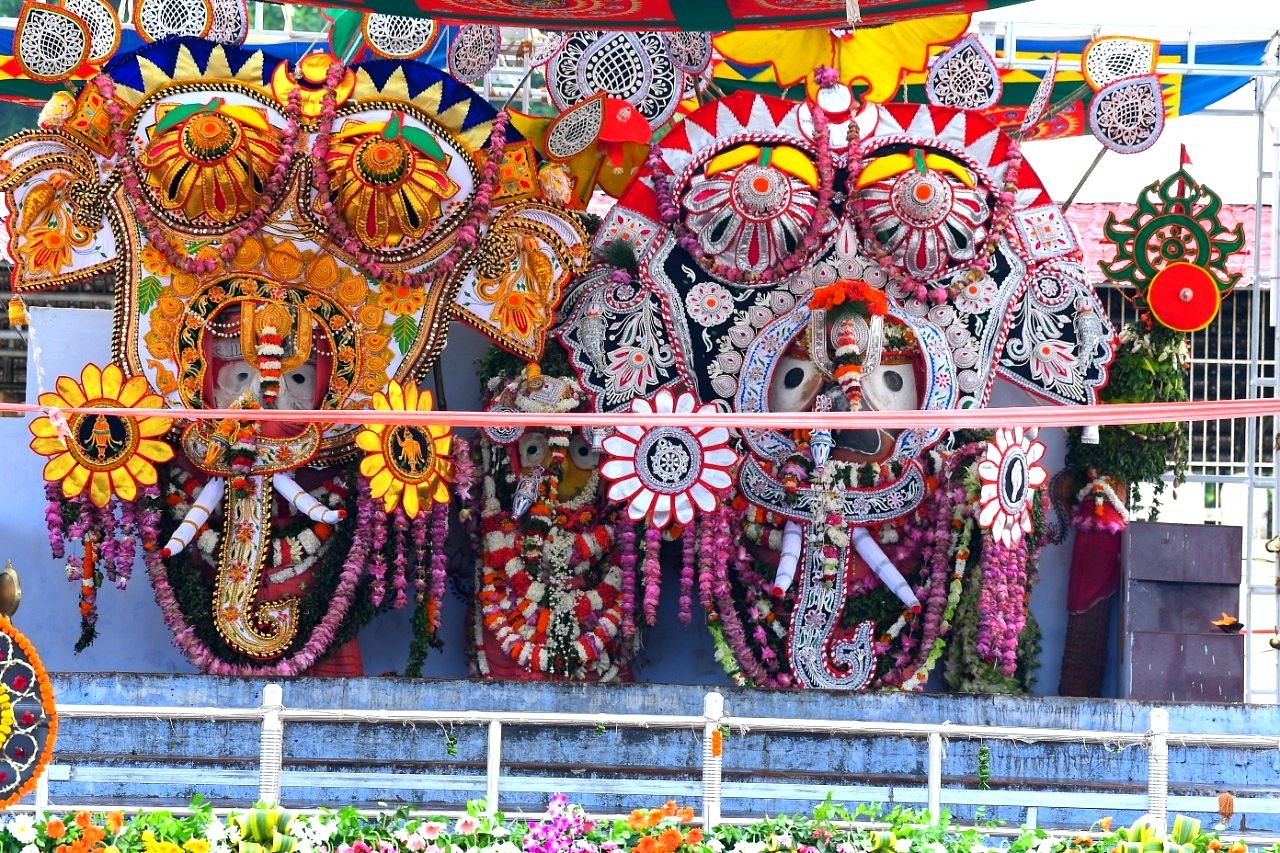Culture
Snana Purnima: When Jagannath Goes Into ‘Quarantine’ Every Year For A Fortnight
- Jagannath of Puri falls ill each year this day and goes into isolation to emerge rejuvenated after a fortnight.

Hathi Besha of Lord Jagannath of Puri (@debashis_bapun/twitter)
Marking the onset of monsoon on this day, the purnima (full moon) of the month of Jyeshta, Lord Jagannath of Puri has his ceremonial bath, on the occasion of Snana Purnima. Lakhs of devotees throng the temple town each year to wash off their sins on this day of cleansing which also marks the beginning of the festivals that follow.
And every time I get drenched or have classes cancelled owing to monsoons in Mumbai, my research guide from Odisha Dr Pradhan would tell me the tale of how the divine trinity of Puri too would fall ill this season after the ceremonial bath. He would narrate unfailingly every time how secret herbal remedies would then be applied to the deities to rid them of the fever that they would get owing to the elaborate bath they had on Snana Purnima.
This year as the country slowly eases the lockdown and comes out of quarantine, Lord Jagannath today (5 June) has taken his ceremonial bath and will be in 14-day ‘quarantine’ until new moon. This period of hibernation is called anasara. Although worshippers have not been permitted to gather this year, each year people come to have the darshan of this deity in a special ‘besha’ or dressing.
This besha was what caught my attention as it has a special story of how the temple away in Jagannath Puri is connected to Karnataka. The besha that the deities of Puri sport today before they go into isolation into the anasara house for 14 days is called the Gajanana Besha, where the idols of Jagannatha, Balabhadra and Subhadra sport the look of an elephant. It is locally also called the hathi besha.
While there are various versions of the tale I have heard, the leitmotif is that a priest named Ganapati Bhattar from Karnataka, who visited Puri to have a darshan of the lord, was not pleased to see the Lord not in the form he worshipped - that of Ganapati as he came from the Mahaganapatya sect. The other tale goes that the priest from Kaniari village in Karnataka on reading about the prowess of the lord in the Nilgiris in the Brahma Purana makes his journey to Puri.
He reaches Puri on the day of Snana Purnima and sees the deities seated on the snana bedi and the elaborate 108 pots abhisheka being conducted. But they had no trunk. The lord was not the elephant headed one. Dejected, the priest is all set to leave, when he is stopped by the representative of the King of Puri, Mudirath.
He convinces him to have a darshan of the Lord from close quarters and the priest sees the Lord sporting an elephant face form. He is said to then have prostrated before the lord and merged with him. And from then, the brothers or Jagannath and Balabhadra are dressed in the elephant attire on the Snana Purnima day.
Devotees are allowed upto the snana mandap to have a darshan of the deities on this day as they cannot worship them for the next two weeks until they arrive out of isolation fully ‘cured’. A pata chitra is kept in place of the idols for the devotees to worship while the idols receive special ayurvedic panchakarma treatment from herbs that are kept buried underground for a whole year.
Nursed back to health, the siblings emerge out of isolation on the new moon day, all rejuvenated, to give the deities the nabajoubana darshan on Netra Utsav.
While all festivities were held with no crowd gathering, thanks to the pandemic, hope the nation too emerges healthier when the Lord of Puri does this year. Jai Jagannath.
Support Swarajya's 50 Ground Reports Project & Sponsor A Story
Every general election Swarajya does a 50 ground reports project.
Aimed only at serious readers and those who appreciate the nuances of political undercurrents, the project provides a sense of India's electoral landscape. As you know, these reports are produced after considerable investment of travel, time and effort on the ground.
This time too we've kicked off the project in style and have covered over 30 constituencies already. If you're someone who appreciates such work and have enjoyed our coverage please consider sponsoring a ground report for just Rs 2999 to Rs 19,999 - it goes a long way in helping us produce more quality reportage.
You can also back this project by becoming a subscriber for as little as Rs 999 - so do click on this links and choose a plan that suits you and back us.
Click below to contribute.
Latest